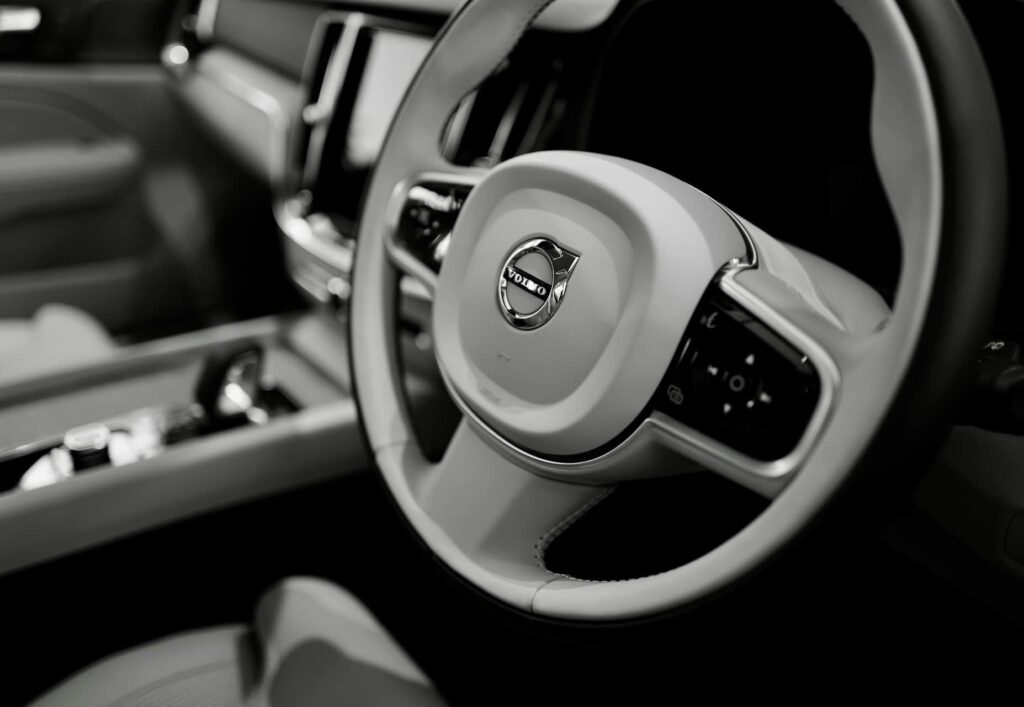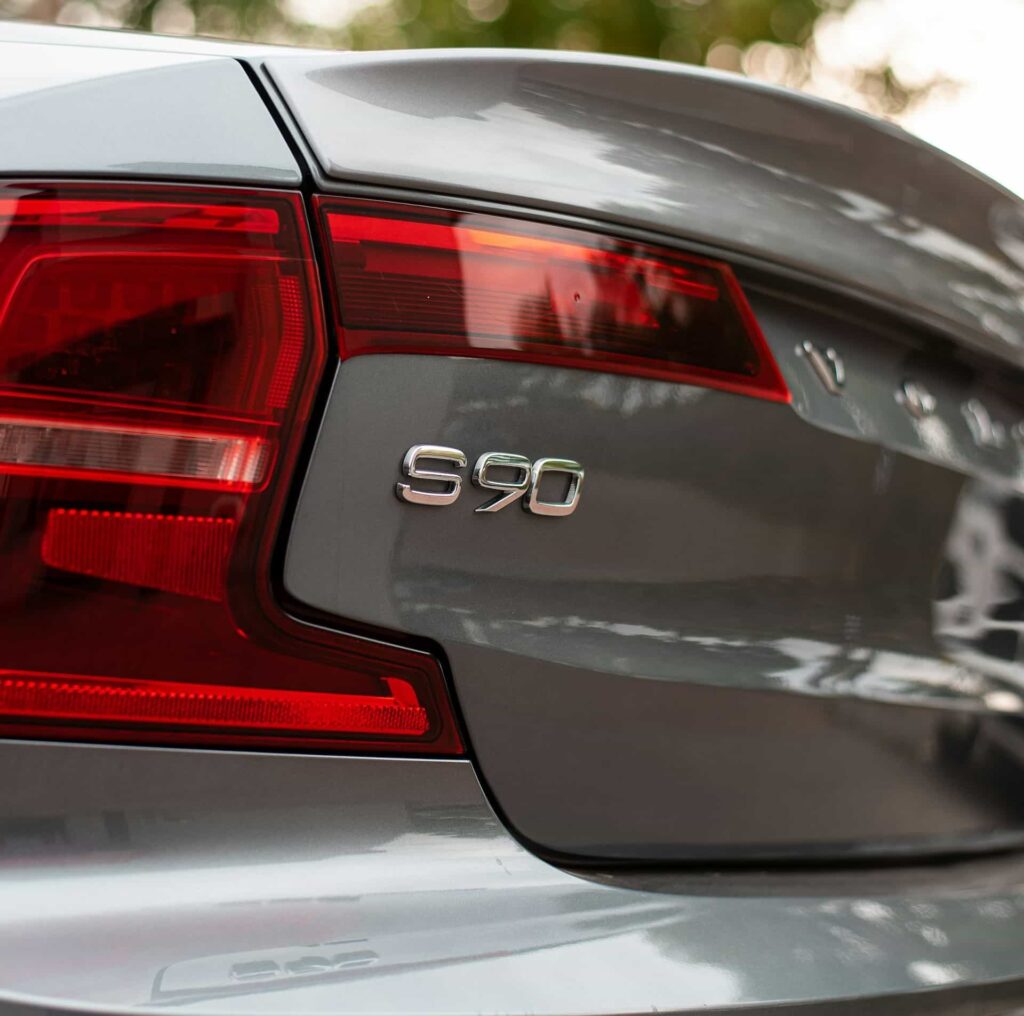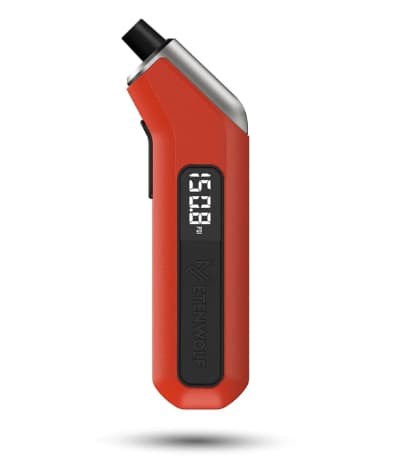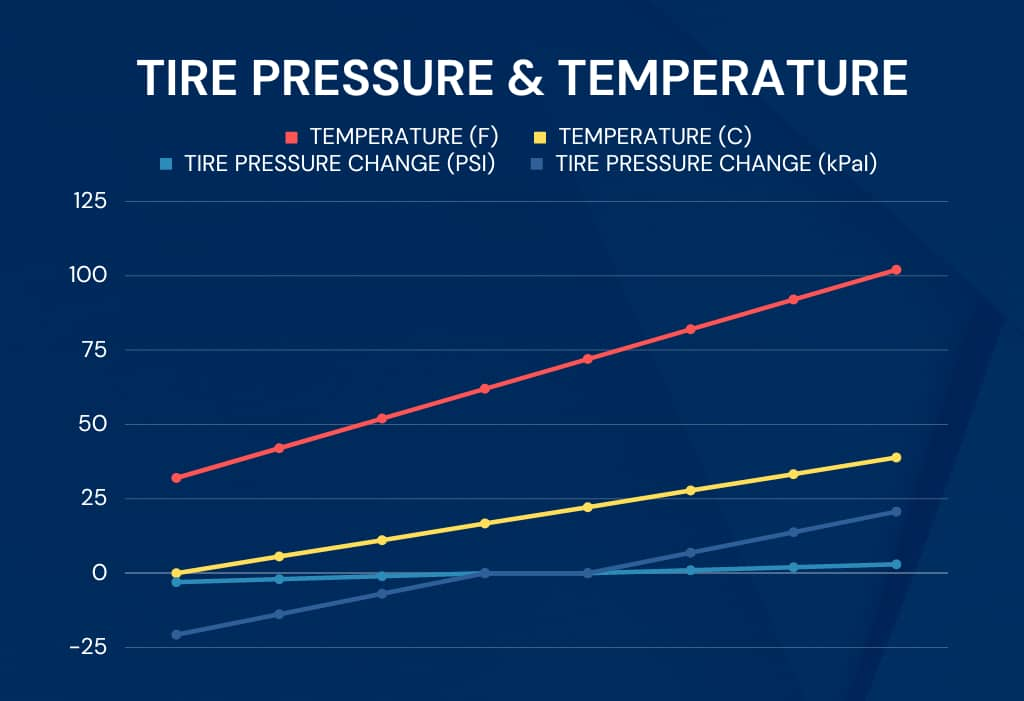Steps to Reset Volvo S90 Tire Pressure Monitoring System
Before resetting the tire pressure light on your Volvo S90, it’s important to first manually inspect and adjust the air pressure in all four tires. Ensure that the tire pressure matches the specific recommendations indicated on the inside of the driver’s side door panel. Adjust the tire pressure when the tires are cold, which means either before driving the vehicle or after it has been stationary for at least three hours.
STEP 1: START VOLVO S90 ENGINE
Start the engine of your Volvo S90, or engage RUN mode by turning the ignition switch twice without stepping on the brake pedal.
STEP 2: SETTINGS
Press the settings button located directly below the information display screen.
STEP 3: SWIPE THE TOUCH SCREEN
Glide your finger across the information display screen to reveal all the menu options on the screen.
STEP 4: CAR STATUS
Press CAR STATUS on the touch screen from the menu options.
STEP 5: TPMS
Select the ‘TPMS’ option located on the left-hand side of the information display touch screen.
STEP 6: STORE & RESET TIRE PRESSURE
Choose the STORE PRESSURE option on the touch screen display.
STEP 7: CONFIRMATION
You’ll see a prompt stating “Store Tire Pressure” “Press OK after the tire pressure in all four tires has been checked and adjusted”. Press OK on the touch screen.
Afterward, another notification will appear that reads “Tire Pressure Monitor” “Storing pressure is in progress and will finalize automatically.” Select OK.
STEP 8: DRIVE
Drive your Volvo S90 for at least 10 minutes at speeds exceeding 22 Mph.
WHAT IS A TIRE PRESSURE MONITORING SYSTEM?
The Volvo S90 TPMS stands for tire pressure monitoring system. This system exists to keep track of and alert the driver what the tire air pressure is and when it’s low. The Volvo S90 utilizes an indirect method for its Tire Pressure Monitoring System (TPMS). This approach relies on data from the vehicle’s wheel speed sensors to measure the tire pressure, instead of using individual pressure sensors in each tire.
HOW DOES THE VOLVO S90 TPMS WORK?
The TPMS in the Volvo S90 operates using the vehicle’s Anti-lock Braking System (ABS) sensors, specifically those that track wheel speed.
WHEEL SPEED SENSORS
The Volvo S90’s indirect TPMS employs wheel speed sensors located either behind or within each wheel hub, tracking the rotation speed of each wheel by using either magnets or hall effect sensors. These sensors gather and send this rotational data to the Volvo’s computer system, integrating with several functionalities, such as the ABS and TPMS systems.
COMPARISON OF WHEEL SPEEDS
The principle behind indirect TPMS is that a tire with lower air pressure will have a slightly smaller diameter, causing it to rotate faster than the other tires. This method evaluates and contrasts the rotation speeds of all four tires through its wheel speed sensors. Notably, the Volvo S90’s indirect TPMS functions only when the car is moving, as it depends on measuring wheel speeds to gauge tire pressure.
CALCULATING AIR PRESSURE DIFFERENCES
By analyzing data collected from the wheel speed sensors, the tire pressure monitoring system in the Volvo S90 can detect when one wheel consistently rotates at a higher speed than the rest, indicating a possible reduction in tire air pressure.
ALERTING THE DRIVER TO LOW AIR PRESSURE
Upon detecting a significant difference in rotational speeds, which signals a decrease in tire pressure, the system triggers a dashboard alert to inform the driver. In these situations, the Volvo S90 illuminates both a “low tire pressure” warning and the standard tire pressure alert symbol (a yellow exclamation mark) on the dashboard.
WHAT CAN CAUSE THE TIRE TREAD CIRCUMFERENCE TO CHANGE IN SIZE?
When the tire’s inflation pressure drops significantly below the recommended level.
If there are disparities in brand, make, or model among the four tires.
In cases where the four tires have different sizes.
If a tire displays signs of tread damage or structural issues.
When uneven load distribution occurs on one side of the Volvo S90.
During situations where one axle bears an uneven load, such as while towing.
Upon installation of a compact spare wheel.
Following any replacement of a tire or wheel.
After making changes to tire pressure or performing tire rotations.
When using snow chains on the tires, which may potentially trigger false alerts due to the increased tire circumference caused by the chains.
WHEN SHOULD YOU RESET THE VOLVO S90 TPMS?
After adjusting the air pressure in a tire.
When a tire or wheel has received maintenance or repair.
Following a tire rotation.
After detaching and then reattaching any tire or wheel to the Volvo S90.
Upon the installation of a spare tire.
WHAT DOES STORING AND RESETTING THE VOLVO S90 TPMS DO?
Storing or resetting fresh tire pressure settings effectively creates a new baseline for tire air pressure in the Volvo S90. Therefore it’s essential to calibrate the air pressure to the specified levels when the tires are cool before recording (storing) these updated pressure values.
THE EFFECTS OF DRIVING WITH UNDERINFLATED TIRES
Insufficient tire pressure can result in tire overheating, potentially leading to tread separation and sudden tire blowouts. Tires that are low on air pressure cause excessive bending and flexing of the sidewalls, elevating the risk of overheating and unforeseen tire failures.
WHY IS THE TIRE PRESSURE LIGHT ON WHEN THE TIRES LOOK FINE?
One common reason for the tire light to illuminate in the Volvo S90, even when the tires seem to be in good condition, is the use of tires from different brands and with different sizes. The indirect TPMS system is sensitive enough that even slight variations in tire size or brand can activate the low tire pressure warning even when tire air pressure is correct. It’s crucial for all four tires to be uniform in terms of size, brand, make, and model.
IDENTIFYING THE LOW TIRE ON YOUR VOLVO S90
The information display screen in the Volvo S90 identifies the particular wheel with low air pressure. To ensure the TPMS in the Volvo S90 operates accurately, the vehicle must be in motion. It is recommended to use a digital air pressure gauge to confirm that the air pressure in each tire matches the readings displayed on the information screen.
WHY IS THE TIRE LIGHT ALERT FLASHING?
When the tire pressure light flashes it means there is a malfunction within the tire pressure monitoring system. For example if a wheel speed sensor is not functioning correctly, the TPMS won’t be able to report tire air pressure. This will cause a TPMS malfunction.
IS IT SAFE TO DRIVE THE VOLVO S90 WITH THE TIRE PRESSURE LIGHT ON?
We recommend refraining from driving the Volvo S90 when the low tire pressure warning is activated. If the low tire pressure indicator lights up, it’s advisable to safely bring the vehicle to a stop and manually check the air pressure in each tire using a digital tire pressure gauge. Additionally, visually inspect the tires and wheels for any anomalies.
HOW FAR CAN YOU DRIVE THE VOLVO S90 WITH THE LOW TIRE LIGHT ON?
There isn’t a defined “safe” timeframe or distance for driving with the low tire pressure light on. It’s advisable to determine the reason behind the low tire pressure warning in the Volvo S90 before continuing your trip.
VOLVO S90 TIRE SIZE AND AIR PRESSURE
TIRE SIZE | Front Psi/kPa | Rear Psi/kPa |
245/45R18 | 36/248 | 36/248 |
255/40R19 | 36/248 | 36/248 |
245/40R20 | 38/262 | 38/262 |
255/35R20 | 39/268 | 39/268 |
WHY DOES TIRE AIR PRESSURE GO UP AS YOU DRIVE?
As you drive your Volvo S90 for approximately half an hour at speeds exceeding 45 mph, the tire pressure generally experiences a natural rise of 2-4 psi due to the heat generated by friction and tire flexing. Furthermore, with every 10-degree Fahrenheit increase in temperature, tire pressure can elevate by 1-2 psi as the air inside expands. This dual influence underscores the significance of verifying and calibrating tire pressure when the tires are in a cool state to ensure precision. It’s important to note that these approximations can differ based on factors such as ambient temperature and tire condition.
WILL THE VOLVO S90 LOW TIRE PRESSURE LIGHT COME ON IF THE TIRES ARE OVERINFLATED?
When a tire experiences overinflation, the display screen of the Volvo S90 will notify you but the low tire alert will not trigger. It is advisable to come to a halt and conduct a manual check of the air pressure in each tire. Driving can result in tire heating, leading to an uptick in air pressure. To obtain an accurate air pressure reading, it is recommended to let the tires cool down, ideally waiting for 3 hours after driving.
WHAT HAPPENS IF THE WHEEL SPEED SENSORS STOP WORKING?
If your Volvo S90 wheel speed sensors are broken the TPMS will malfunction and the ABS light on the dashboard will illuminate.
FINDING THE SOURCE OF A TIRE LEAK WITH SOAP AND WATER
If you suspect a tire on your Volvo S90 is losing air due to a leak, follow these steps to locate it:
Begin by inflating the affected tire to a minimum of 40 Psi.
Prepare a solution by mixing water and dish soap in a spray bottle.
Thoroughly spray the soapy solution across the entire tire, ensuring thorough coverage of the bead and valve stem.
Observe for the formation of bubbles and trace these bubbles back to their origin to pinpoint the location of the leak.
CAN A CHANGE IN ELEVATION TRIGGER THE LOW TIRE PRESSURE FAULT?
Your Volvo S90’s tire pressure light is unlikely to illuminate solely because of driving to a higher elevation. When ascending in altitude, the internal air pressure in your tires naturally tends to increase. Approximately, for every 1,000 feet of ascent, there is an incremental rise of around 0.5 Psi in tire pressure.
CAN THE VOLVO S90 TIRE PRESSURE MONITORING SYSTEM BE DISABLED?
The Volvo S90 TPMS cannot be disabled.
USING WINTER TIRES OR A SECOND SET OF WHEELS
When using winter tires or an extra set of wheels and tires, it is crucial to enroll them in the information display of your Volvo S90 as a new tire set. Failing to accurately store tire or wheel sizes can activate the low tire alert in your vehicle.
CAN WEATHER CHANGES TRIGGER THE LOW TIRE PRESSURE INDICATOR?
One frequent trigger of the low tire pressure warning in the Volvo S90 is the fluctuation in air temperature. Tire air pressure tends to vary by around 1 Psi (6.8 kPa) for every 10°F change in temperature. For instance, a 43°F temperature drop occurring over a 7-week period can lead to a decrease in the Volvo S90’s tire pressure from 36 Psi to 31 Psi, resulting in the activation of the tire warning indicator. Considering that temperature changes are commonplace, especially in specific regions, it is advisable to conduct regular tire pressure checks on your Volvo S90 every few weeks.
THE EFFECT OF LOW TIRE PRESSURE ON THE VOLVO S90'S FUEL CONSUMPTION
Maintaining the proper tire pressure in your Volvo S90 is essential to optimize fuel efficiency. When tires are underinflated, they create increased rolling resistance, placing higher demands on the Volvo engine and resulting in greater fuel consumption. A mere 1 Psi decrease in tire pressure across all four tires can lead to an approximately 0.2% reduction in fuel efficiency. This means that a common underinflation of around 5 Psi could potentially cause a 1% decline in the Volvo S90’s miles per gallon (MPG).
ARE TIRE PLUGS SAFE TO FIX TIRES?
Leveraging ten years of expertise as an automotive technician, I frequently utilize tire plugs to efficiently mend tire punctures. They are completely safe as long as they are applied correctly. Tire plugs can potentially endure for the entire remaining lifespan of a tire. Nevertheless, it is vital to avoid employing tire plugs on tires with severely worn treads or on the tire’s sidewall. In situations involving substantial punctures or leaks, it is recommended to use a tire patch or replace the tire entirely.
Everything in this article is applicable to all Volvo S90 models and versions built between 2017-2025 including the Volvo S90 recharge and Volvo S90 Gas (mild hybrid).
Please note that this blog post contains Amazon affiliate links. This means that if you make a purchase through one of these links, we at TPMSRESET.COM may earn a small commission at no extra cost to you. We only recommend products that we personally use and believe in. Thank you for supporting us.







